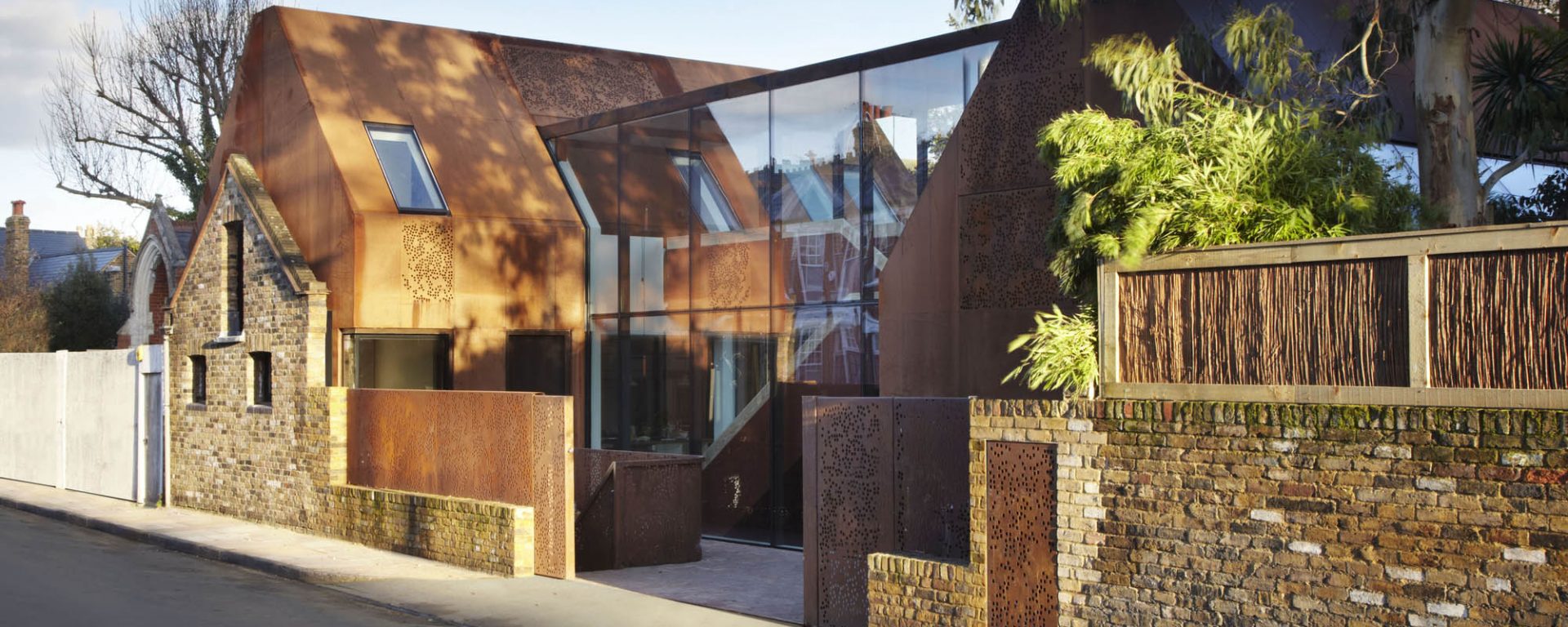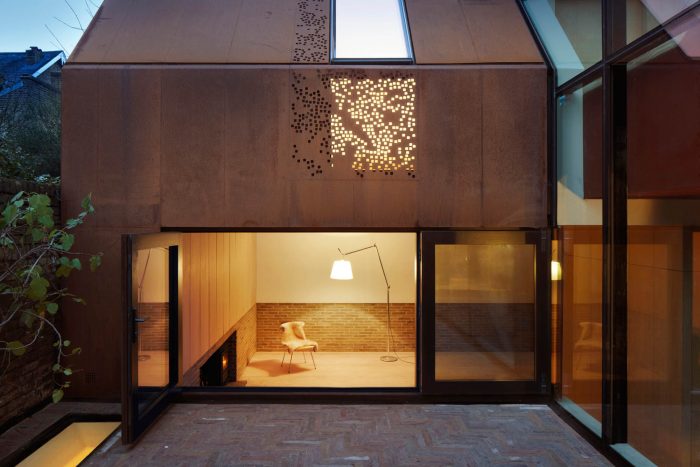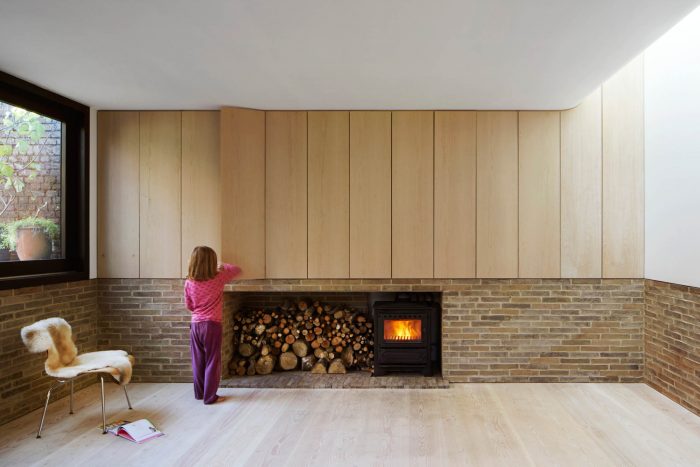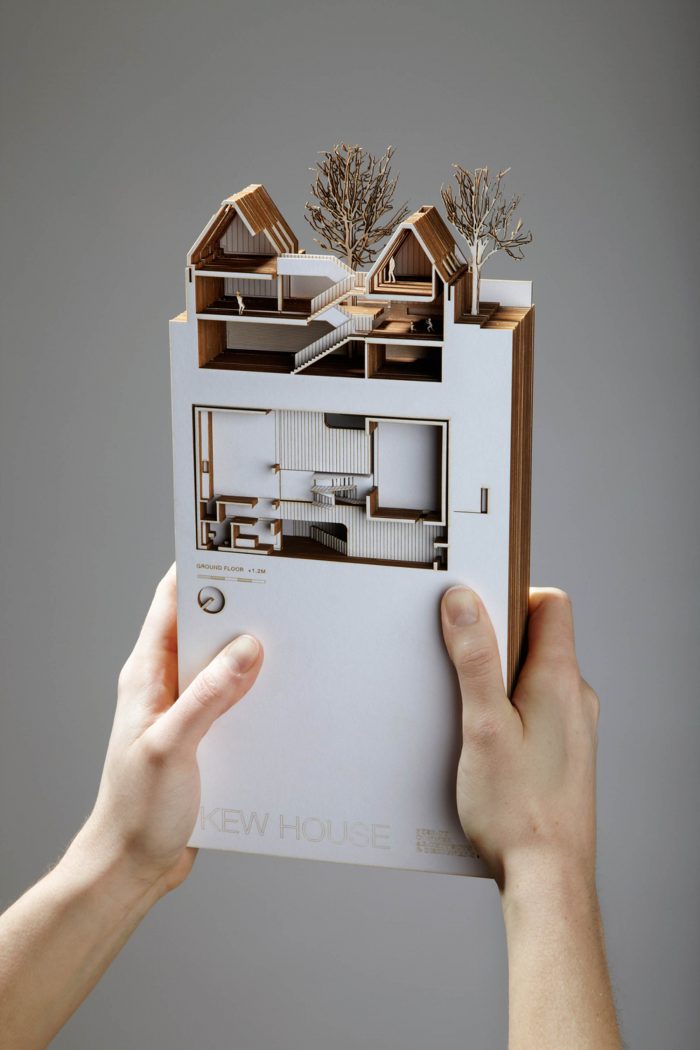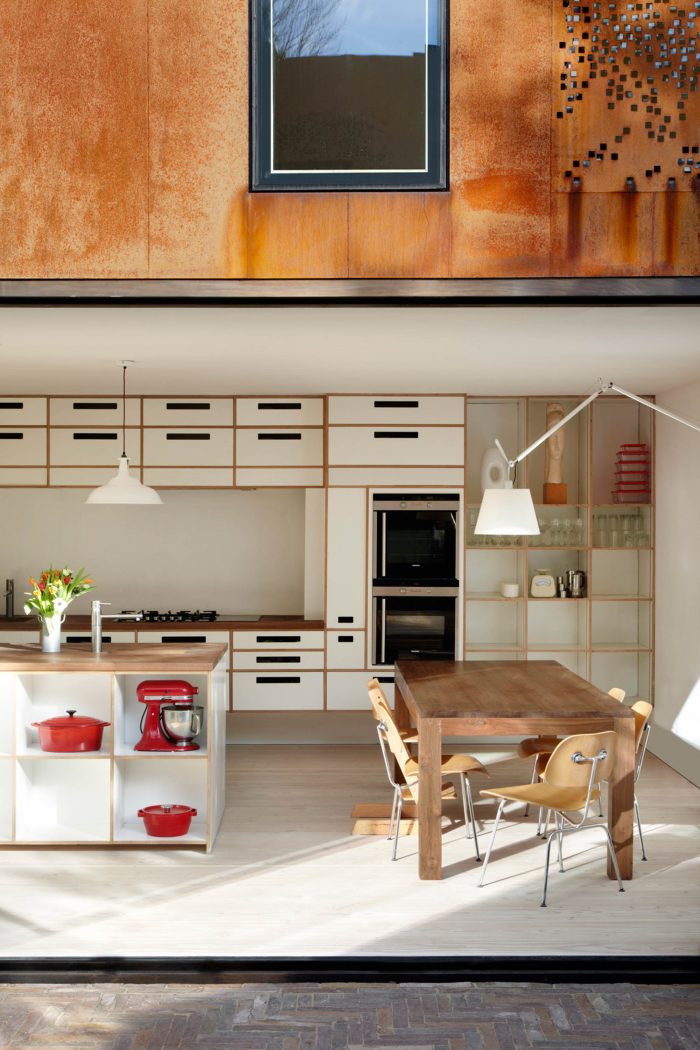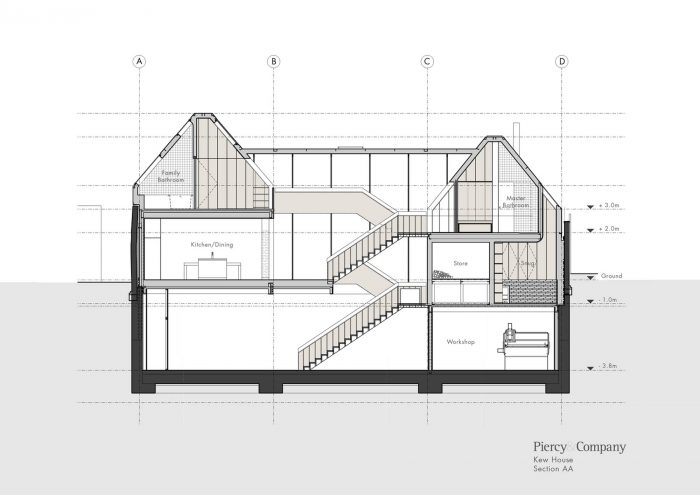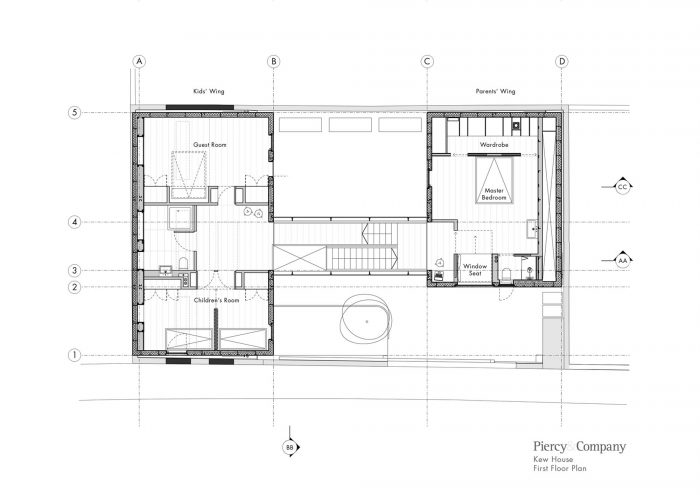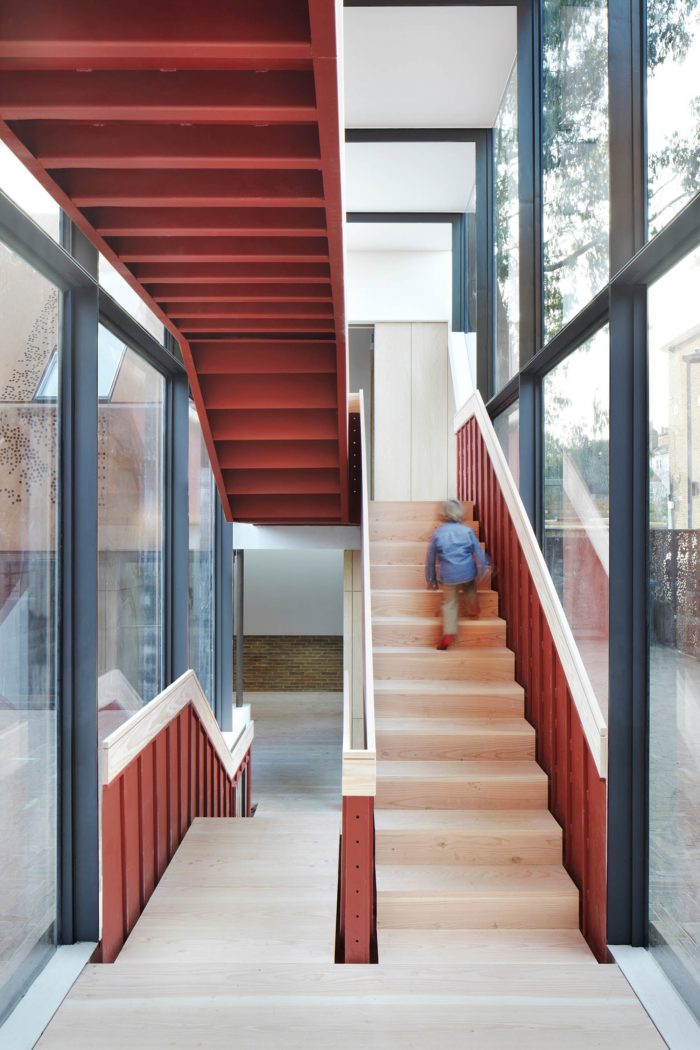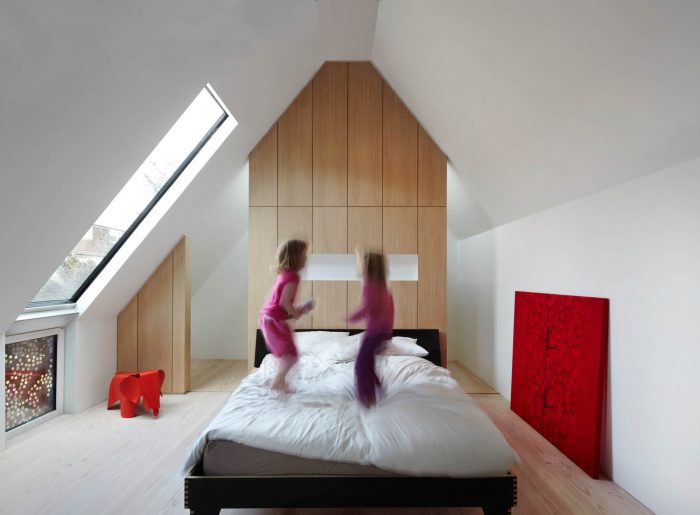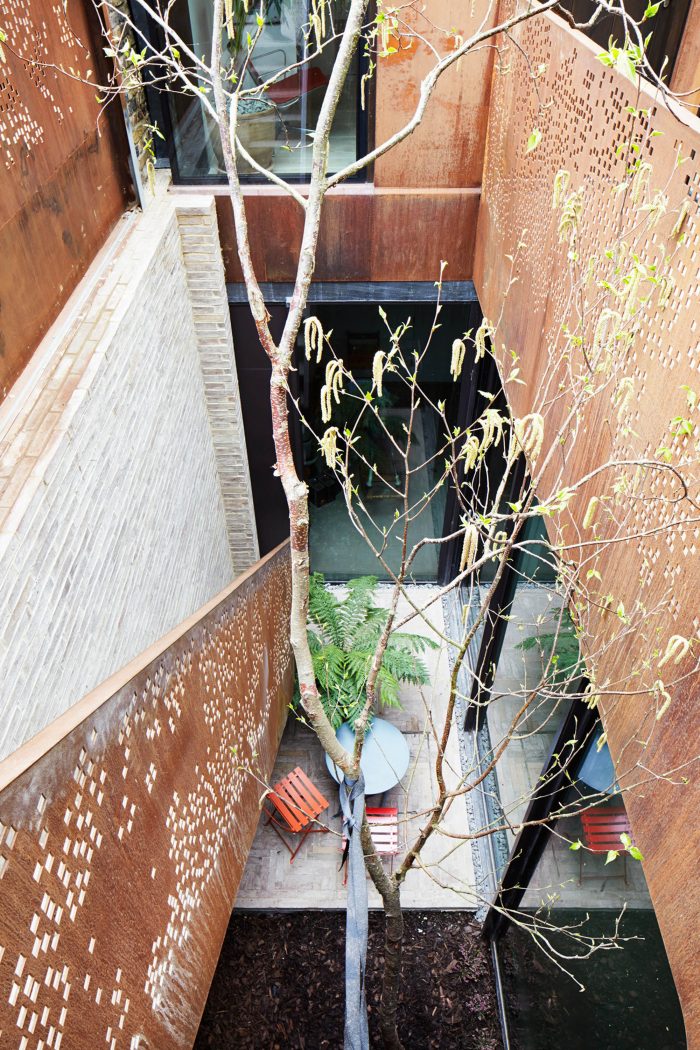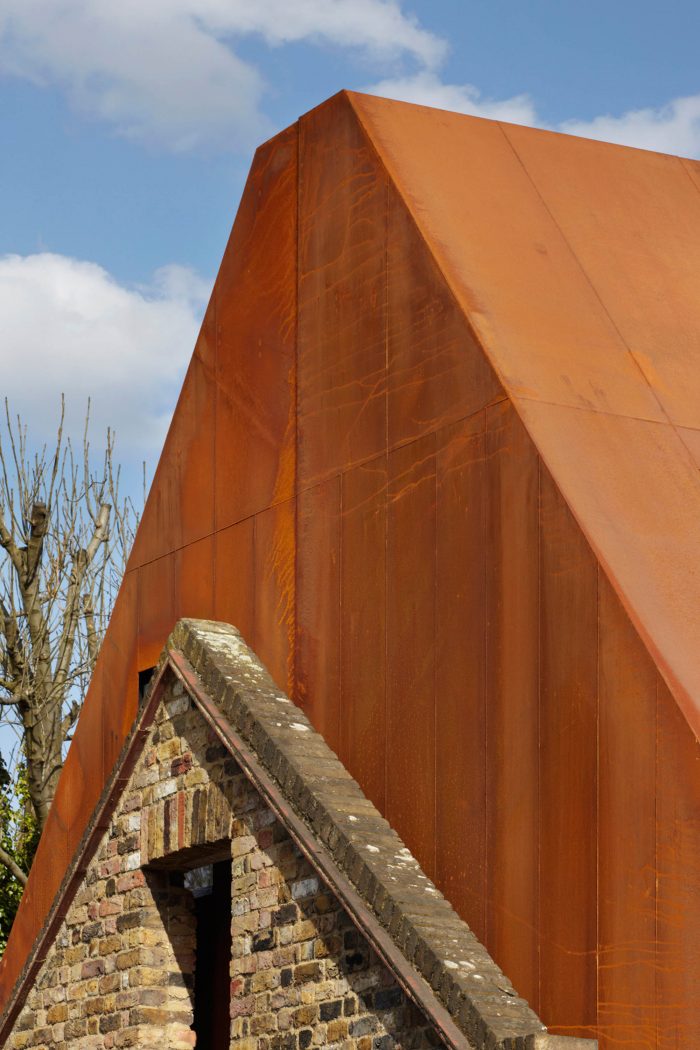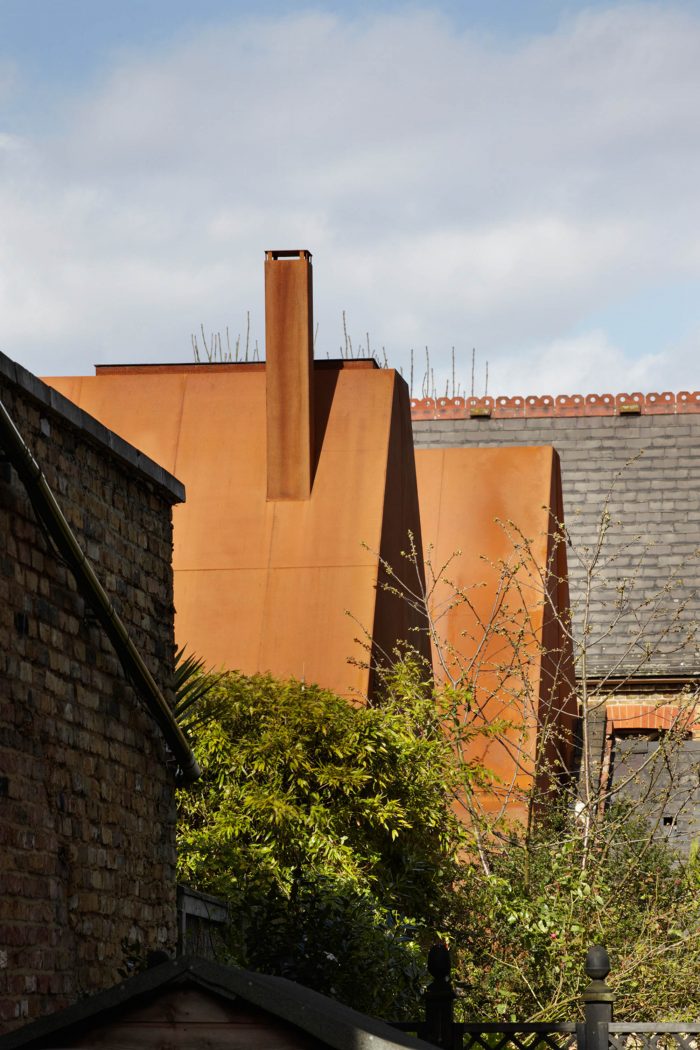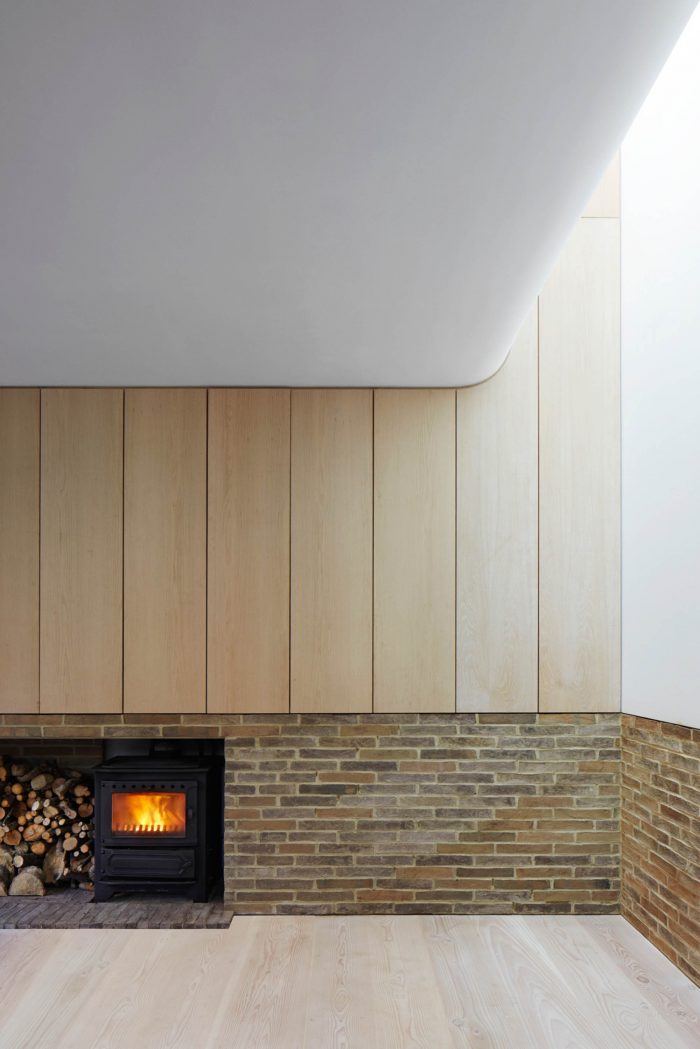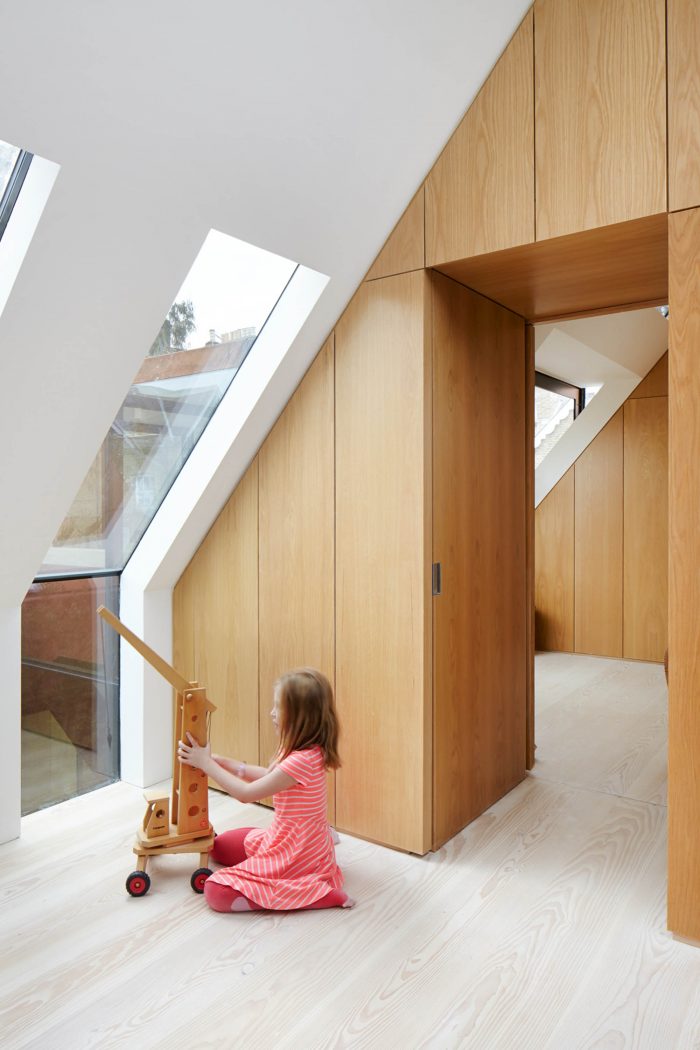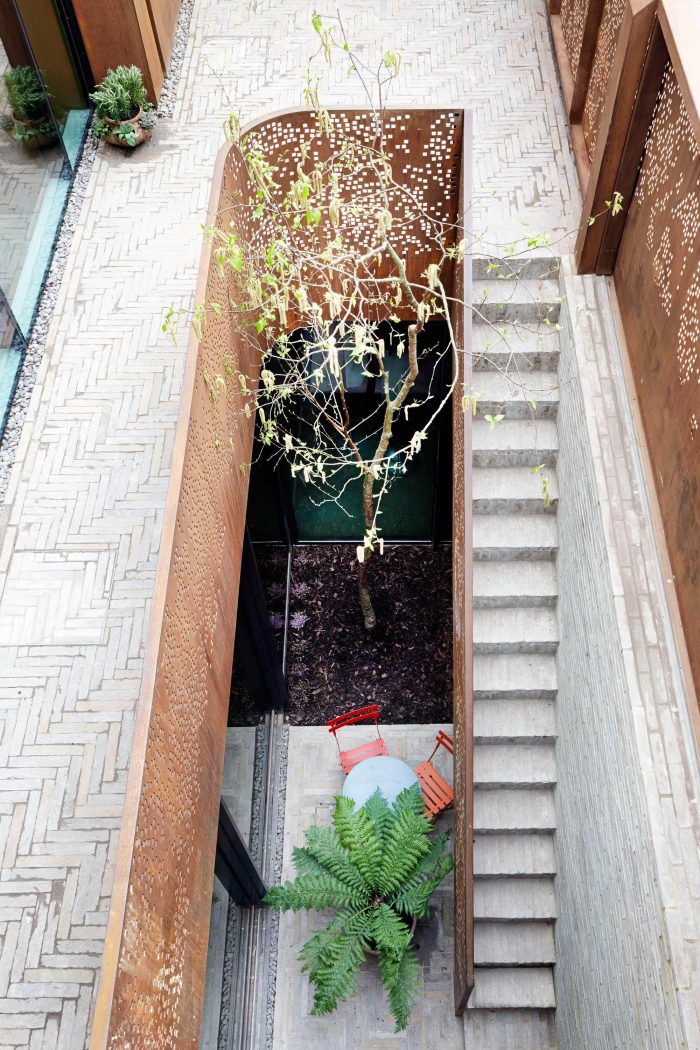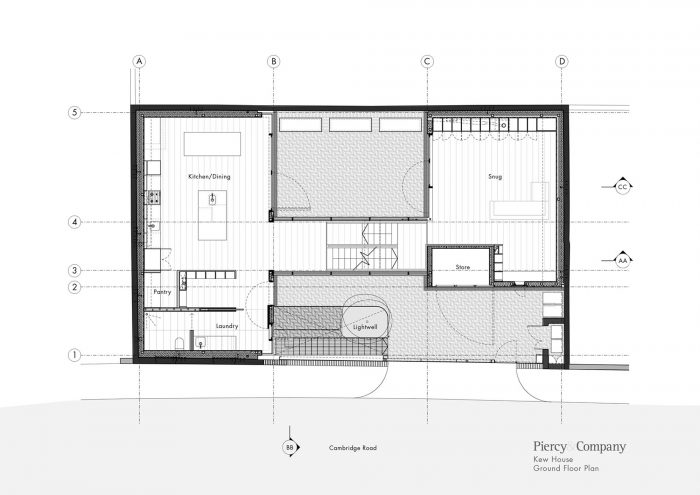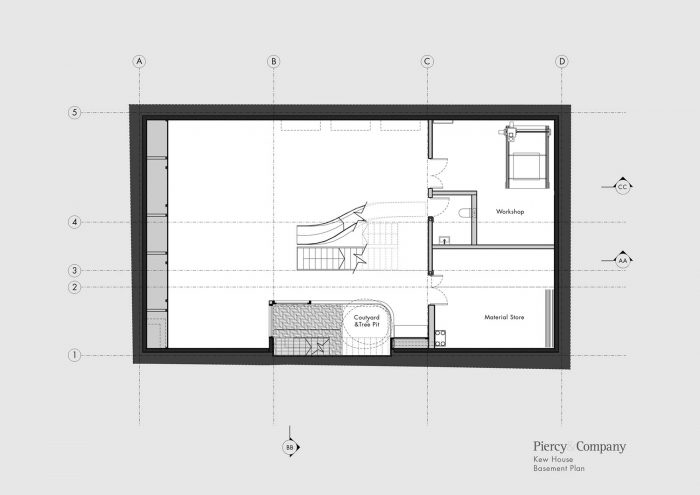该项目位于伦敦西南部的Kew Green保护区内,有四间卧室的家庭住宅由两个雕塑般的风化钢体组成,插在保留下来的十九世纪的马厩墙后面。
Set within the Kew Green Conservation Area of southwest London, the four bedroom family house is formed of two sculptural weathering steel volumes inserted behind a retained nineteenth century stable wall.
通过与客户Tim和Jo Lucas的一系列对话,设计方案逐渐形成,包括想象孩子们在房子里跑来跑去,夏天的晚餐在外面进行,安静的角落与社交空间的平衡,以及实用的问题,如晾晒衣物和如何在地下室建造一条船。
The brief evolved through a series of conversations with clients Tim and Jo Lucas, which ranged over imagining the children running about the house, summer dinners spilling outside and the balance of quiet nooks with social spaces, to pragmatic concerns like drying laundry and how to build a boat in the basement.
作为回应,Piercy&Company将房子设计成一个家庭希望使用空间的建筑图,其内部景观由不同的路线和层次连接到富有表现力的空间,旨在为成人和儿童创造愉悦的时刻。
In response, Piercy&Company designed the house as a built diagram of the way the family wanted to use the spaces, with an internal landscape of alternative routes and levels connecting expressive spaces intended to create moments of delight for adults and children alike.
首先是一个家庭住宅,空间是非正式的,但有丰富的附带空间、意外的光线和复杂的垂直体积。房子是由一个简单的计划形成的,以充分利用有限的场地,减少建筑在街景中的质量,并响应家庭的生活模式。由两个长方形组成;其中一个略小,向后退,下沉1米,两翼在底层都有生活空间,上面有卧室。
First and foremost a family home, the spaces are informal but rich with incidental spaces, unexpected light and complex vertical volumes. The house is formed of a simple plan to make the most of the constrained site, reduce the building’s mass in the streetscape and respond to the living patterns of the family. Consisting of two rectangles; one slightly smaller, set back and sunken 1m lower, the wings each have living spaces on the ground fl oor and bedrooms above.
连接两翼的是一个玻璃封装的循环通道,使光线涌入房子,同时在内部空间之间提供呼吸空间。主要居住区和睡眠区的两个外壳由4毫米的风化钢构成,是结构和立面的艰苦组合。耐候钢是免维护的,对于封闭的场地来说是非常重要的,并且通过拼接的焊接和穿孔板来软化。耐候钢的深橙色调和该表皮中的穿孔与附近邱园的斑驳光线和秋季色调相呼应。在内部,橡木单板和Dinesen的衬垫是一个轻盈、自然和有弹性的材料调色板的基础。
Connecting the wings is a glass encased circulation link allowing light to pour into the house whilst providing breathing space between internal spaces. The two shells housing the main living and sleeping areas are formed of 4mm weathering steel, a hardworking combination of structure and façade. The weathering steel is maintenance free, essential for the enclosed site, and is softened by a patchwork of expressed welds and perforated panels. The deep orange tones of the weathering steel and the perforations within this skin echo the dappled light and autumnal palette of nearby Kew Gardens. Inside, oak veneer paneling and Dinesen fl ooring are the basis of a light, natural and refi ned palette of materials.
一系列的规划限制–包括保护区的环境、用途的改变和三面没有通道–构成了项目的背景。为了克服这些挑战,Piercy&Company将房子插入到保留的19世纪的砖砌屋檐后面,并将房子分成两个屋檐的形式,以符合当地的建筑群。
A list of planning constraints – including a conservation area context, a change of use and no access on three sides – formed a backdrop to the project. To overcome these challenges Piercy&Company inserted the house behind a retained 19th century brick gable end and split the house into twin gabled forms in keeping with local massing.
风化钢的自然锈迹、污渍和穿孔使每个表面都有独特的特征,这取决于其暴露程度和方向;将形式固定在其环境中,并给人以永恒的感觉。Kew House是一个实验性的建筑,建筑师和客户对 “部件套件 “方法和数字制造带来的自建可能性有着共同的兴趣。
The natural patina of the weathering steel with its marks, stains and perforations gives each surface a unique character depending on the exposure and orientation; anchoring the form into its context and imparting a sense of permanence. Kew House was an experimental build, driven by the architect’s and client’s shared interest in a ‘kit-of-parts’ approach and the self-build possibilities emerging from digital fabrication.
耐候钢外壳在赫尔市预制,然后在现场用起重机吊装并焊接起来。数控铣床和现场细木工车间被用来制作定制的镶板、家具和橱柜,可以由客户和建筑学毕业生组成的小团队进行装配,测试数字制造可以减少设计和生产之间的距离的理论。这项技术对房屋建筑的影响是多方面的,在预算范围内定制家具变得越来越可行。
The weathering steel shells were prefabricated in Hull, then craned into place on site and welded together. CNC milling and the on-site joinery workshop were used to create bespoke paneling, furniture and cabinetwork that could be fitted by the client and a small team of architecture graduates, testing the theory that digital fabrication can reduce the distance between design and production. The implications of this technology for house building are manifold with bespoke fi t-out on a budget becoming increasingly viable.
Architects: Piercy&Company
Area: 368 m²
Year: 2014
Photographs: Jack Hobhouse
Structural Engineering: Price & Myers
M&E Engineering: Arup
Sustainability Consultant: Price & Myers
Design Team:Piercy&Company
Clients:Tim & Jo Lucas
City:Kew
Country:United Kingdom

